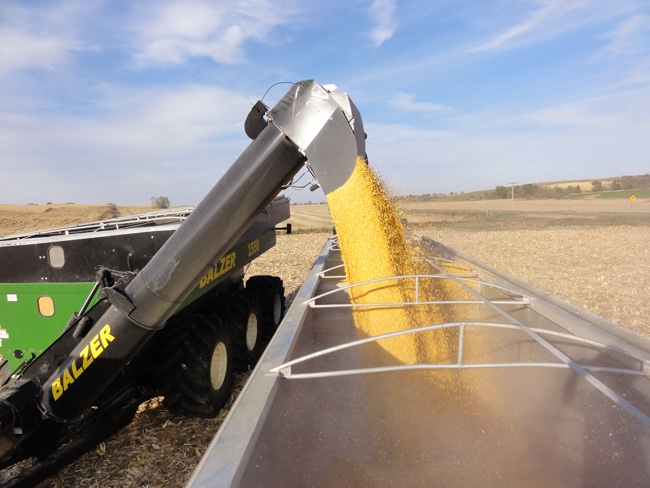July 30, 2012

The National Agricultural Statistics Service (NASS) of the USDA will release the first yield and production forecasts for the 2012 U.S. corn and soybean crops on August 10. The first forecasts of the season are always highly anticipated, but none more than this year as widespread drought conditions have resulted in a wide range of yield and production expectations.
It might be useful to briefly review the NASS methodology for making corn and soybean yield and production forecasts. Data for the forecasts are collected in two separate surveys conducted roughly in the last week of July and the first week of August for the August report. The Agricultural Yield Survey (AYS) queries farm operators in 32 states for corn and 29 states for soybeans asking operators to identify the number of acres to be harvested and to forecast the final average yield. The sample of operators is based on a sophisticated sample design to achieve the desired sample size and each state is expected to achieve a minimum response rate of 80 percent. In 2011, approximately 27,000 operators were surveyed for all crops for the August report. Each operator is surveyed in subsequent months to obtain new forecasts of acreage and yield. Historical relationships indicate that respondents tend to be conservative in early forecasts of final yields (underestimate yield potential), particularly in drought years. This tendency is quantified and factored into official yield forecasts.
The second survey is the Objective Yield Survey (OYS) and is based on an area frame sample of cultivated land in 10 principal states for corn and 11 states for soybeans. Based on the June acreage survey, a random sample of fields is drawn in each state and enumerators visit these fields to take measurements needed to forecast yields in pre-determined segments of the fields. In 2011 these measurements were taken in 1,920 cornfields and 1,835 soybean fields. For corn, the number of plants and number of ears per segment are counted and the size of the ears is measured. For soybeans, enumerators measure row width and count the number of plants, number of main nodes, lateral branches, dried flowers and pods, and pods with beans in each segment. The data are used to forecast grain weight (yield) per acre. Each segment is visited in September, October, and November (if not yet harvested) to take new measurements and counts to form new yield forecasts. Just before the operator harvests the field, each segment is hand harvested and weighed. The data from the two surveys are combined to forecast average yield and production. For a fuller description of this process see our publication here and the complete NASS publication here.
USDA makes new yield and production forecasts in September, October, and November with final estimates released in January. Because yield forecasts are limited by crop maturity and are influenced by subsequent weather, the August yield forecasts tend to have the largest deviation from the final estimates released in January. For the period 1970 through 2010, the August yield forecast for corn ranged from an overestimate of 18.3% to an underestimate of 10.1%. The middle 50% of the forecast errors ranged from an overestimate of 1.3% to an underestimate of 5.1%. For soybeans, the August yield forecast ranged from an overestimate of 16.2% to an underestimate of 10.2%. The middle 50% of the forecast errors ranged from an overestimate of 3.0 percent to an underestimate of 4.5%. For a more complete analysis of the historical yield forecast deviations in August, September, October, and November see the post here.
While the USDA’s August forecast will provide a benchmark for the size of the 2012 corn and soybean crops, the market will continue to form yield expectations beyond the release of the report. Analysts use a combination of techniques to judge yield potential, including crop condition ratings, crop weather models, satellite imagery, and analogue years. In the case of analogue years, there were six previous years since 1960 when the U.S. average corn yield was more than 10% below the unconditional trend yield. The shortfall in those years ranged from 10.4% to 25.6% and averaged 17.5%. A U.S. average yield 17.5% below trend would result in a 2012 average yield of 131 bu., while a yield 25.6% below trend would result in an average yield of 118 bu. There were also six previous years since 1960 when the U.S. average soybean yield was more than 10% below the unconditional trend yield. The shortfall in those years ranged from 11.8% to 19.3% and averaged 14.9%. A U.S. average yield 14.9% below trend would result in a 2012 average yield of 36.7 bu., while a yield 19.3% below trend would result in an average yield of 34.8 bu.
In addition to yield, the size of the 2012 crops will be influenced by the magnitude of harvested acreage. Harvested acreage, particularly for corn grain, may be unusually small in relation to planted acreage, further reducing production potential. The corn and soybean markets continue to trade smaller and smaller crops, but prices may not yet reflect the full extent of production shortfalls.
You May Also Like




